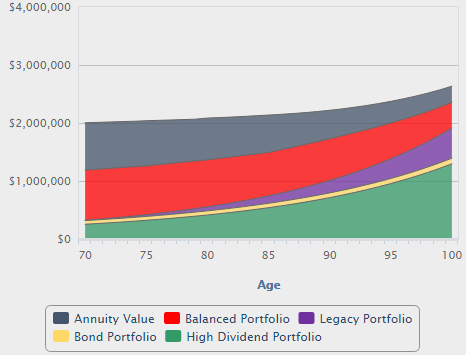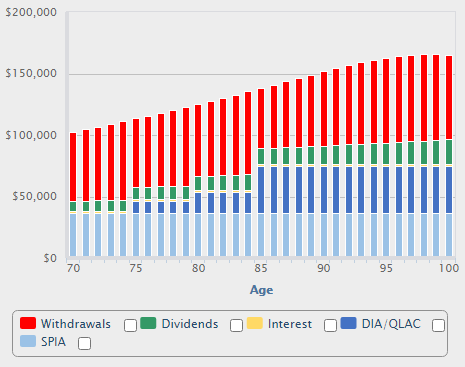An article in The New York Times, “How to Enjoy Retirement Without Going Broke,” is a reminder that experts — from Nobel Prize winners to financial advisors — are challenged by planning for retirement income. It also showed that those who provide investment advice are stymied by this almost universal problem for a large part of the retiree market.
On the academic side:
“It’s really nasty. It’s the nastiest, hardest problem I’ve ever looked at,” said William Sharpe, who won the Nobel Prize in economics and reported his progress on the problem of how retirees can manage their financial assets without running out of money: “I can’t say I’ve found some magic solution, because I haven’t.”
On the advisor side:
One advisory firm appears more confident than the academics with brochures touting “7 innovative ways to generate income from your nest egg.” On the other hand, they also “hate annuities” and their firm’s reward system – we make money when you do – is based on having clients take market risk, rather than providing secure income.

The Challenges Under Consideration
From academic to practicing advisor, why do they find it so challenging to figure out a smarter way to create a plan for retirement income — even while the average visitor to Go2Income gets the idea of income allocation? Here are a few reasons the experts don’t get it:
- Most of the traditional research or practice for savers has been about asset allocation and the techniques to improve or manage the returns on investing.
- The regulatory structure permits an advisor to be a fiduciary even though the advisor is not required at least to consider other financial products like income annuities that can deliver tax-efficient lifetime income.
- For high-end advisors a large part of their practice is designed for high net-worth individuals who have sufficient retirement savings to live off the interest and dividends, avoiding the risk of running through their funds.
- The algorithm that integrates annuity payments into an income allocation plan requires an understanding of income annuities, particularly the differences with annuities designed for accumulation.
- These experts often confuse the market value of an investment with its liquidity. Income annuities, just like a pension or Social Security, have a market value – but with no liquidity. The chart below shows for a typical income allocation plan the combination of the market value/liquidity of investment portfolios and the market value of future guaranteed annuity payments. That latter has significant value, creating stability in income as well as peace of mind.
Income Allocation Plan for Female 70; $2 Million Savings; 50% Rollover IRA
Projection of Fair Market Value of Plan

Note that the market value of this Plan starts at the initial retirement savings of $2 million and reaches $2.25 million at age 95. Under this Plan, the retiree wanted the value of the investment portfolios to equal $2 million at age 95. The retiree accomplishes this by reinvesting a portion of the rollover IRA distributions into a designated legacy account. The amount reinvested in this Plan is approximately $4,000 per year.
Importantly, in this Plan the income starts at $102,000 and grows to $140,000 at age 85 and $160,000 at age 95. Here’s a breakdown of the Sources of Income under this Plan – which is the basis of the Income Allocation. Note that this income will be reduced by taxes and the reinvested income into the designated legacy account.
Income Allocation Plan for Female 70, $2 Million Savings, 50% Rollover IRA
Projection of Sources of Income

So, you can see how Income Allocation works by substantially boosting income over a lifetime, while at the same time understanding the market value of a Plan.
Outperform The Experts to Plan for Retirement Income
Other experts were quoted about annuity payments in the article referred to above, “The purchaser has to write a big check to get a series of small checks, which may simply look like a bad deal to a naïve consumer.” Our experience is that visitors to Go2Income understand the idea of annuity payments, just as they understand Social Security and pension payments.
What About Low-Cost Robo-Advisors?
These advisors are new on the scene and don’t have a history with high net-worth investors, so they could approach advising on a Plan for Retirement Income with a fresh pair of eyes. So far, however, they seem to take the de-accumulation approach, albeit with lower fees. We expect that once they become knowledgeable around income annuities, they’ll see that Income Allocation can work withing their advisory model of low fee and better results.
Retirees who educate themselves know they can do better.
As I explained in an earlier blog, everyday consumers can follow a few simple steps to create true income that lasts a lifetime and is low-risk. Creating an Income Allocation Plan allows you to look at many planning alternatives, and to decide — based on your own expertise — which ones are the best for you.
Income Allocation Planning at Go2Income.com enables you to design and evaluate your own plan for retirement. For guidance and answers to other retirement questions, contact me at Ask Jerry.